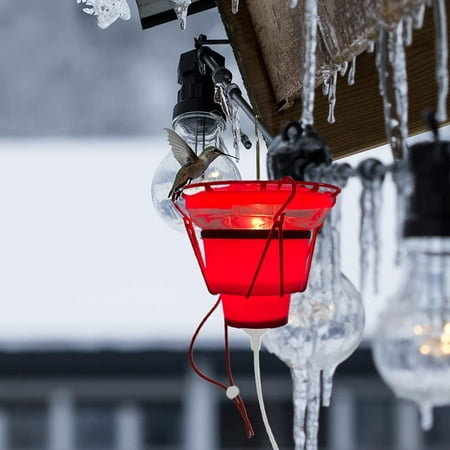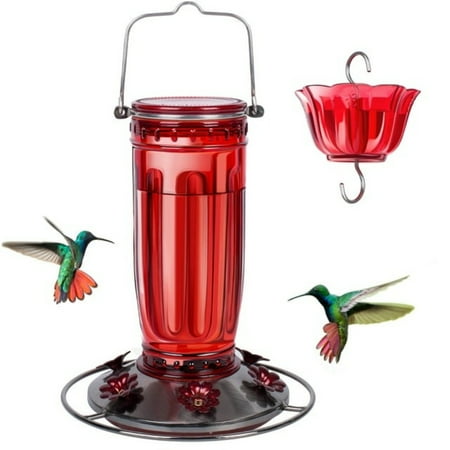How to care for hummingbirds in winter – and support migrating or resident birds during the cold months ahead
By following three simple steps, you can help these winged wonders during the winter months


Hummingbirds are perhaps the most popular birds found across the United States. These native miniature birds are often seen flitting and flying around yards during spring and summer but typically migrate south for the winter months.
Some species, however, remain in North America despite the change in seasons and so knowing how to care for hummingbirds in winter is important. Anna's hummingbird, for example, stays resident along the Pacific Coast, often spotted in California, Oregon and Washington. In addition, a handful of hummingbird species remain in the mild, southern states for the winter months, including in Texas and Florida where frost and snow are less common.
So, if you are wondering how to help garden birds in winter and want to support both resident birds or species that are late to or have skipped the hummingbird migration, our guide has all the information you need.
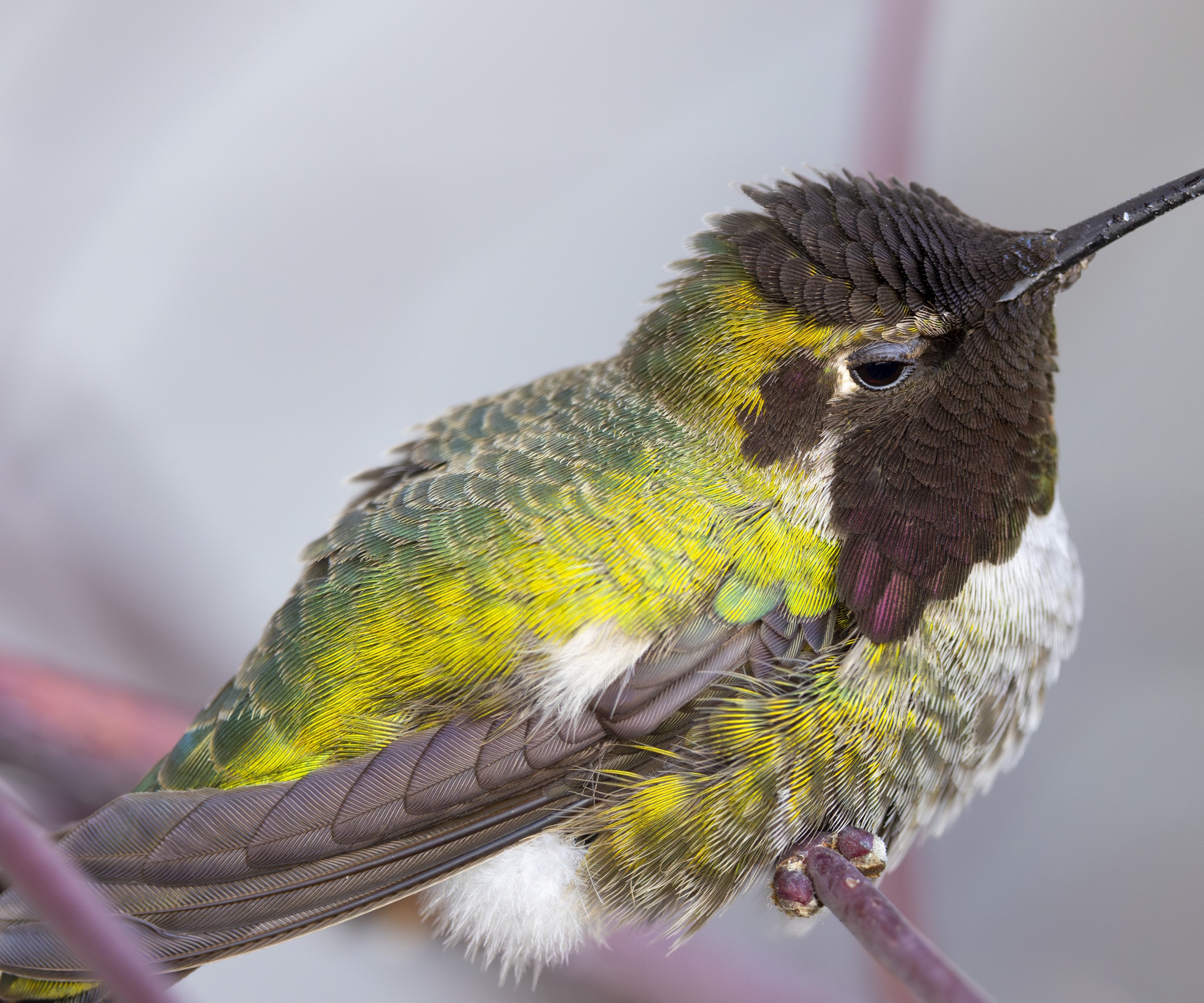
How to care for hummingbirds in winter
As with all garden wildlife in winter, providing food, water and shelter is important. As the temperature drops, we, as gardeners, must play our part to support birds and mammals through to the springtime. So, if you want to learn how to attract hummingbirds and support them through the cold weather ahead, here are three simple things you can do to help.
1. Use heated feeders for hummingbird in winter
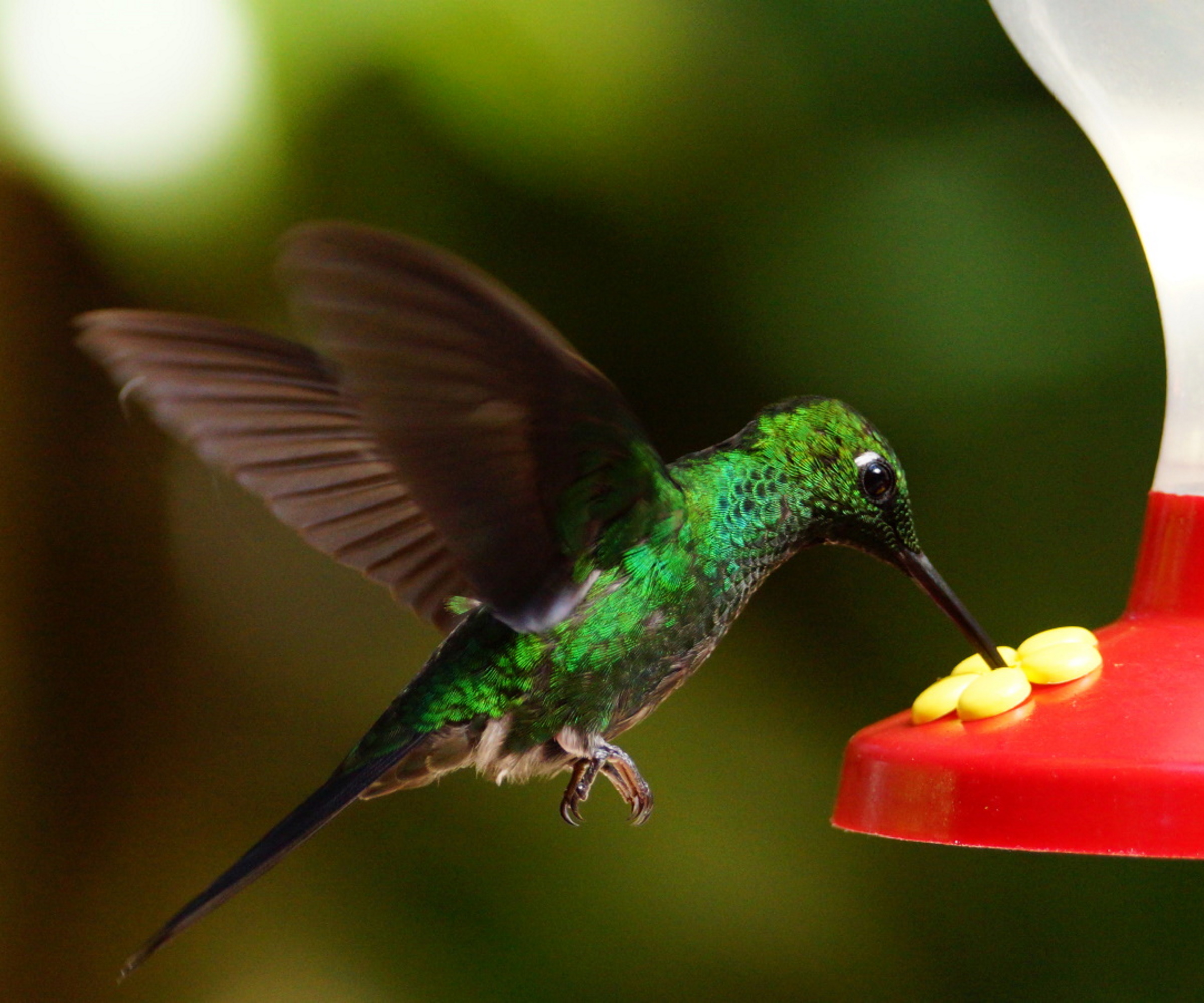
Many gardeners ask: when should I take my hummingbird feeder down? Well, if you live along the Pacific Coast, or in a southern region, it is best to keep a hummingbird feeder in your yard year-round.
In cooler US hardiness zones, such as US hardiness zone 5, where Oregon is found, I suggest investing in a heated hummingbird feeder. These simple gadgets will prevent the nectar from freezing during cold spells, ensuring that any resident hummingbirds or stragglers who are late to join the migration will be able to feed despite the chilly weather.
Heated hummingbird feeders are available from Amazon, with an incredibly simple setup. Just plug in, and keep hummingbirds fed through the winter. Whatever nectar you choose to use, be sure to dilute it following the packaging instructions.
Design expertise in your inbox – from inspiring decorating ideas and beautiful celebrity homes to practical gardening advice and shopping round-ups.
Finally, one common hummingbird feeder mistake is failing to clean them regularly. Even during winter, it is a good idea to clean feeders to prevent mold or bacteria build-up, which can happen quickly, especially in heated feeders. Simply mix a 1:4 solution of white vinegar and water to wipe down and rinse the feeding ports twice per month.
2. Protect hummingbird nests in winter
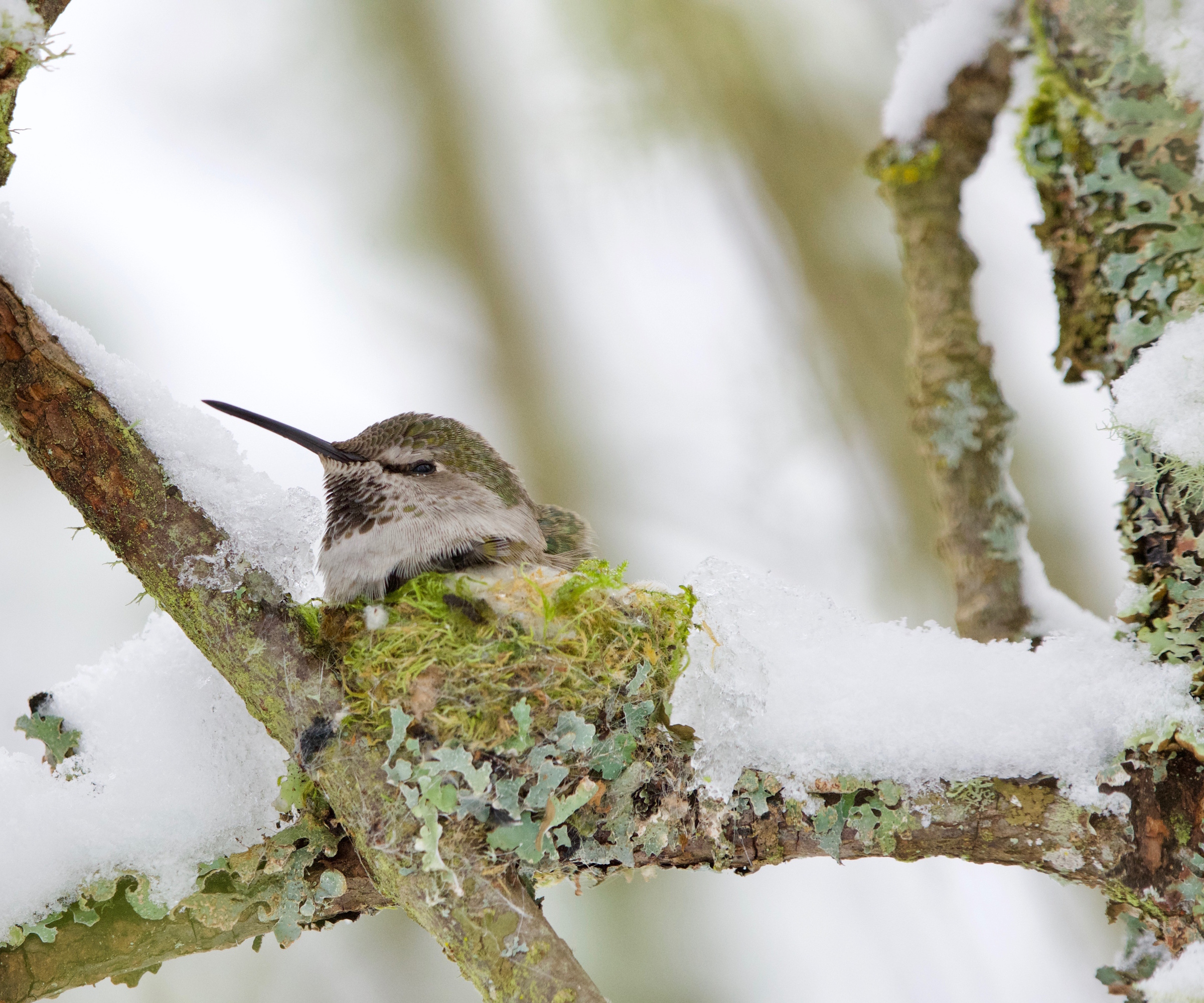
Hummingbirds shelter in open nests that they build using garden debris. While you might see that hummingbird houses are available to buy online, they are unnecessary and not suitable for these tiny birds - a lesson in not believing or buying everything seen online. Instead of building or buying shelter for hummingbirds, we only need to protect what they have already sculpted.
'Hummingbird nests are tiny, often about the size of a golf ball, and are typically well-camouflaged in trees or shrubs,' says Reese Robbins, garden expert and creator of Just Pure Gardening. 'They will usually be 10 to 20 feet off the ground, made of soft plant material.
'These tiny birds typically construct their nests on top of a branch or at the join of two branches. To avoid disturbing nests, do not trim trees, shrubs or hedges where you think hummingbirds might be nesting in the fall or winter. Instead, wait until early spring, before the breeding season brings and the bulk of hummingbirds return to the US in April.'
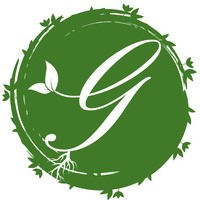
Reese L. Robbins is the founder of Just Pure Gardening, a site full of fruit and vegetable growing guides, garden ideas, and garden product reviews.
3. Plant winter flowering shrubs for hummingbirds
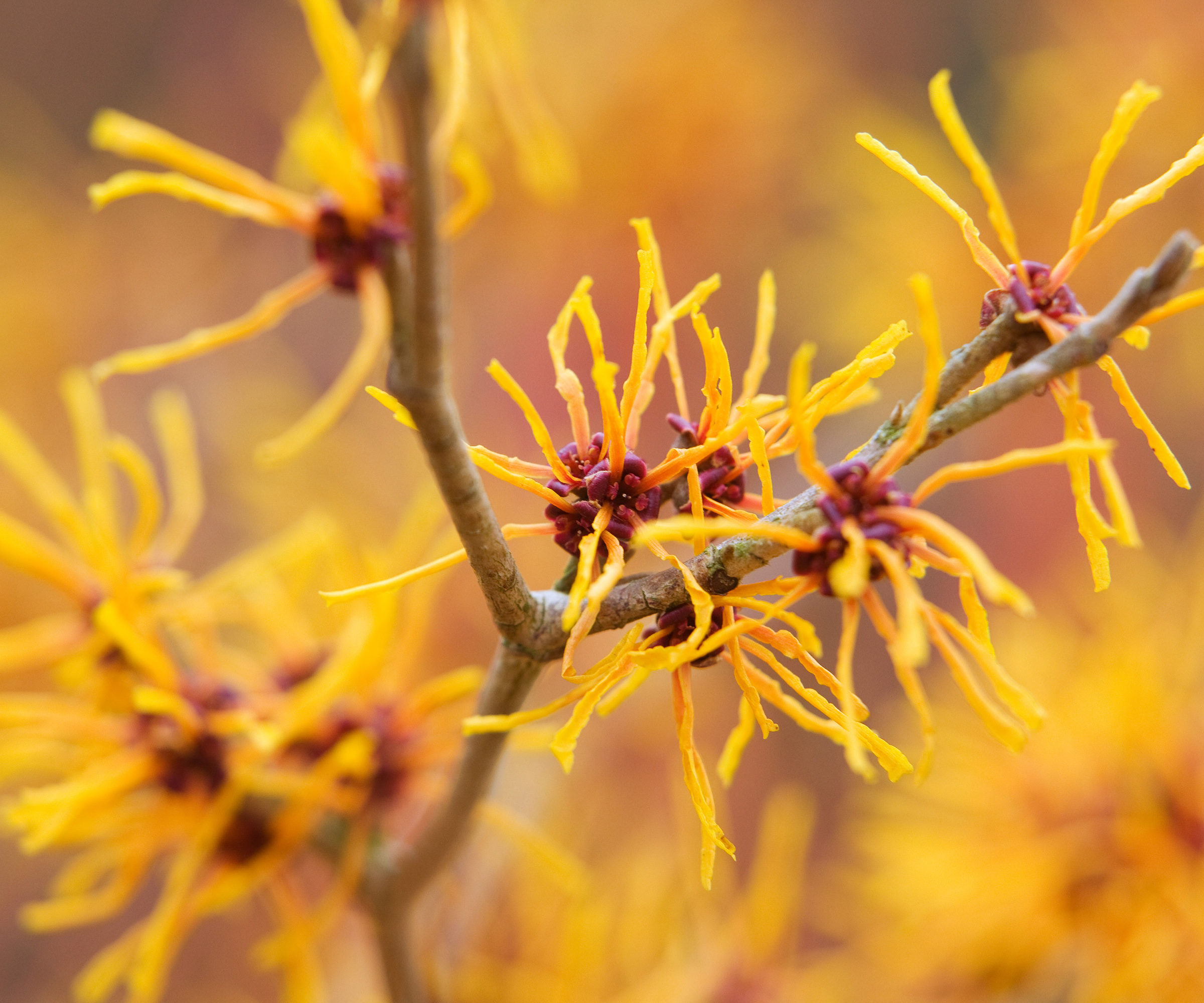
While it is a good idea to hang a feeder in your yard, it is far preferable to provide plenty of winter flowering native plants that hummingbirds will enjoy. What's more, providing plenty of nectar-rich plants will also encourage hummingbirds to make a home nearby, encouraging them to stop off whether they migrate or remain for the winter.
One colorful shrub is the Oregon grape, Berberis aquifolium, which is native to western North America and can be grown from US hardiness zone 5 to zone 8. Hummingbirds will flock to the long-lasting yellow flowers that open in December and January.
While there are many trees that attract hummingbirds, such as European spindle trees, why not learn how to grow witch hazel for a winter flowering specimen? The native witch hazel, Hamamelis virginiana, can be grown from zone 5 and produces vibrant spider-like blooms from January onwards that will prove popular with hummingbirds. Native witch hazel shrubs are available to order online from Amazon.
FAQs
Should I keep a bird bath in my yard for hummingbirds?
Hummingbirds will often drink from rain puddles, ponds or even melting snow, but it is a good idea to have a bird bath in any yard as a backup. In terms of bird bath winter care, keep an eye on the water and break up any ice sheets that develop to ensure that hummingbirds can hydrate.
If you are keen to get up, close and personal with these marvelous miniature birds, consider investing in a hummingbird feeder camera this year. This gadget will allow you to snap high-quality images while hummingbirds feed, helping you to enjoy the coloring and detail of their feathers and long beaks.
For more winter wildlife advice, see our guide on how to care for woodpeckers in winter, to help these native birds survive the coldest months of the year.

Thomas is a Content Editor within the Gardens Team at Homes and Gardens. He has worked as a professional gardener for both public spaces and private estates, specializing in productive gardening, growing food and flowers. Trained in Horticulture at the Garden Museum, he has written on gardening and garden history for various publications, including The English Garden, Gardens Illustrated, Hortus, The London Gardener and Bloom. He has co-authored a Lonely Planet travel book, The Tree Atlas, due out in 2024.

